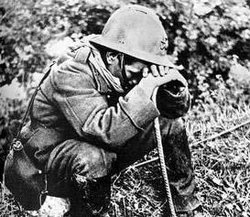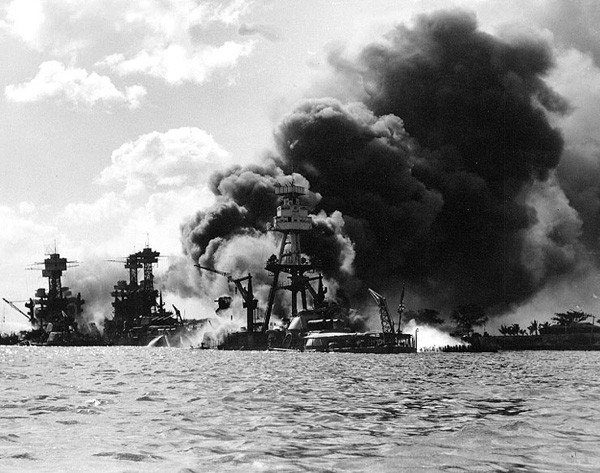European News:
SPAIN HIT BY SYNDICALIST RIOTS: The unrest in Spain continues as the Anarcho-Syndicalist party, the CNT-FAI, continued riots throughout Spain. The Syndicalists have shut down about 50% of the industry in eastern Spain, particularly around Barcelona. It is actually unknown how many workers participated in such strikes and riots, but it is clear it was in the hundreds of thousands. The Spanish police was sent out to control the riots in almost every major Spanish city. The only place still relatively loyal to the Spanish government now is Southern Spain. Meanwhile, the Carlists in the north still hold Oviedo, and have resurged in Burgos. The total casualties in the now fully fledged rebellions have reached new heights. Over 300 armed Carlists were killed or wounded in northern military operations, as well as over 900 Carlist supporter casualties. In the east, 33 Syndicalist workers were killed and over 2,000 arrested. Police casualties soared to over 100 personnel, trying to control the crowds. Military casualties were not released, but it is estimated just over 200. The stage is set for civil war, as the government tries to keep its hold on what few territories remain loyal.
(Spain: +5% dissent)
GERMANY DISBANDS FAUD: The German government announced this month that FAUD, the Free Workers Union of Germany, was to be banned from Germany, and it would forcibly disband the Anarcho-Syndicalist organization. This is accordance with Germany's recent war with the Syndicalist Internationale Commune alliance of the Commune of France, Republic of the Sicilies, and the Union of Britain. FAUD has been forced underground by the German police, although many of FAUD's leaders were arrested. A large portion of FAUD have evacuated to the Commune of France, although they still not have been allowed clearance by the French government to remain there. Denmark has also been affected by this move, as over 2,000 Syndicalists have evacuated to this neutral nation. Denmark can either hand over the Syndicalists to Germany, allow them to stay, or deport them to France/Britain. Nonetheless, many moderate citizens of Germany have been angered by this move.
(Germany: +5% dissent
Denmark: Make a decision)
A FAUD Propaganda Truck, Just before the Disbanding of the Organization
Spotlight: The Second Great War
This month has been a new hope for Sicily, and grim prospects for France. Huge Atlantic Battles continue, and now the air war has kicked off. It is truly the first modern war.
FRANCO-ITALIAN FRONT: With a new sense of urgency, the French have continued their advance into Italy. The French however, have had an extremely hard time this month. During the first crucial half, Italian forces were numerous enough to push the French back enough due to an Italian edge in manpower, and the fact that the Italian strafing had been extremely effective on supply and communication lines. The Italians had an extraordinary success in a huge advance on land, towards Nice. They had managed to penetrate French defenses there, and without reserved, the Italians captured Monaco. The Italians also crossed the Ticino River and captured the city of Novara, the second biggest Piedmont city besides Turin. The Battle of Novara did not go smoothly for the Italians though. The Italians were subject to hand to hand combat in the urban warfare. Nonetheless, the Italians, with their hard determination, took the town.
However, Italian luck had run out by the second half of April. The French had arrived with new motorized infantry, and were advancing in the south. Lucky for the Italians, the French had been stalled in the north by Novara as well, and the French are still trying to wrestle the city from Italian hands. The Italians also have a large defensive line along the Ticino River now. The French managed to encircle Monaco into a pocket, but one with superior terrain advantages. The Italians continue to bombard the French with hidden artillery that have shattered several motorized columns into bits of scrap metal and blood. The French have also met Italian resistance behind their lines, which have slowly picked off supplies and sabotaged transportation networks, providing crucial delays in the French assaults. The air war also clashed, as French bombers not only bombed Italian military targets, but also civilian population centers like Milan. Whether this was accidental or planned out is still unknown at the time. Also, the French fighter wings finally stopped most strafing attacks by the Italian air force, but are now locked in large air-to-air combat.
(Casualties-
French: 2 militia divisions, 1 motorized division, 1 fighter squadron
Italian: 2 infantry divisions, 1 fighter squadron)
Italian Fighter over the Alps, Seeking Targets
ITALIAN-SICILIAN FRONT: Both the Austrian/Italians and the Sicilians have wanted to deliver a killing blow, and both have succeeded and failed in a surprising outcome. In the eastern Sicilian lands, the Austrians and Italians continued to push with a large amount of force, and captured the city of Foggia, the main city which is located in what is called the 'granary of Italy', named for its enormous contribution of food for the Italian populace. With this vital city captured, the region cannot transport its vital food supplies for the Sicilian war effort. Already, several Sicilian cities have begun to ration whatever food remains. The military can still survive on its remaining food supplies, but will most likely collapse by the end of this year unless aid arrives. This makes the Pontine Marshes project even more crucial, which has been fast-tracked by the government. Austrian forces were stalled by Sicilian resistance fighters, which have made life considerably harder for the soldiers. One notable incident was a brilliant move by an unknown Sicilian group, confusing Austrian radio signals with their own in the Austrian language, ordering units to move in random directions and causing mayhem in the Field Headquarters. When the 4th Austrian divisional commanders tried to stop the carnage, they were bombed by a coincidental Sicilian bombing run. Even worse for the Austrians, the 4th Division had to retreat from the advance's flank, exposing the rear of every Italian division in the south. This was a crucial move, which will be explained below.
The Sicilians advanced towards Rome, with minimal Italian resistance, due to the fact
they were advancing with the Austrians. They managed to set up artillery close enough to bombard the Roman suburbs, causing utter destruction. Luckily, several Italian units did push the Sicilians back so they couldn't capture Rome, at the cost of the eastern advance. Seizing the initiative after retreating, the Sicilians realized there were no Austrians guarding the Italian rear, and sent several units crushing supply lines and severing communication lines with Austria. They also put in place radio jammers which interfered with any radio traffic from the Supreme Headquarters. Now, the Austrians can either stall and rebuild, or push on regardless of the consequences. The Austrians also tried to destroy the Sicilian air force, but they only struck when the skies were clear and were always hidden, and were never exposed on their runways.
(Casualties-
Austrian: 2 infantry divisions
Italian: 1 infantry division
Sicilian: 1 conscript division, 1 infantry division)
FRANCO-GERMAN FRONT: The Germans have suddenly received a critical lucky turn of events. Formally, the German forces were almost surrounded by French forces, leaving only the 'Lille Corridor' into Belgium. The German forces outnumbered the French by about 10 divisions, but were suffering severe supply problems. This was because the only supply lines were from the Lille Corridor, and even that little life thread was being continually bombed. By the second week of April, the Germans had used up most of their artillery and tank shells, with only a few airlifts giving meager amounts of new supplies. Food was also scarce, forcing some Germans to scavenge food from bombed out buildings and French citizens. Several cases of court martial due to civilian massacres were carried out with execution. The reason for these massacres were usually to find either food or money. One particular German communique stated as follows:
"Headquarters, my last reserves of food, water, and ammunition for my platoon have been exhausted. We can no longer hold off the French, flanks broken. Men fleeing, rest of men fighting with bare fists and bayonets. Require assistance, retreating."
"We will give artillery support, but we are now limited to firing 5 shells per day. Give us exact location, require precision artillery..."
This supply problem was soon overcome however, by German ingenuity. The German leaders decided they were now too weak to push the French off their flanks, and they couldn't just as well attack the French with a massed human wave. Therefore, the Germans decided to break off all the units as companies and simply cast them off into the French countryside. They would all regroup upon an agreed point and then move behind enemy lines. This tactic worked tremendously well, as the French thought they managed to defeat the Germans, and believed the missing were simply dead and blown to pieces. In reality, they were stealing supplies behind French lines, and picking off communications. Eventually, about half the Germans that survived got back to Flanders-Wallonia to rearm and regroup. Also, several pockets were created, one of which is still holding Amiens. The Germans also still hold Lille and Valenciennes, despite retreating from the Calais & Dunkirk pocket and Le Havre. The Germans have dug in deeply in the Amiens ruins, and have defensive positions all over Lille. The Flanders-Wallonian government have also fortified their entire border with France, making it likely the war may be one of attrition in Belgium, like the last Great War. The Germans have used their air force to engage the French fighters and bombers, as well as having bombing runs upon French-German border fortifications.
(Casualties-
French: 2 militia divisions, 1 infantry division, 2 motorized divisions, 1 bomber squadron
German: 5 infantry divisions, 1 militia division, 1 fighter squadron
French Soldier Weeping for Unseen Dead Comrades
MEDITERRANEAN SEA THEATER: This month was marked by a dramatic change to commercial shipping raiding. The only surface naval ships actually sent out were the Sicilian ships. The Italian Federation didn't send out any ships in the Mediterranean at all, instead keeping them under lock in its ports. These ships could've easily been attacked by bombers and torpedoes, but luckily, no such orders were given. The French ports were void of any ships, as all were transfered to the Atlantic Theater this month.
The Adriatic was teeming with trouble. The entire Sicilian navy met with the Austrian surface fleet here. What is now known as the
Gulf of Venice Incident was a naval engagement of these two navies at the port of Venice. The Sicilian fleet had been targeting Austrian shipping lanes for the first week of April, sinking about 17 merchant vessels. By the second week, they were at the location of this incident, and had sunk an additional 21 vessels. The Austrian surface fleet had been patrolling the Adriatic for any threats, and had finally spotted the Sicilian fleet. Two Austrian battleships and one light vessel group were still in the Venetian port, but three Austrian battleships and an escort group were closing in on the Sicilians. The Sicilian fleet fired upon the Venetian port facilities, damaging one of the Austrian battleships and 12 smaller civilian vessels. In response, several naval artillery batteries situated around Venice opened fire and warned the entire Austrian navy of the danger. The Sicilians somehow managed to listen to Austrian radio traffic and tracked Austrian ship movements. Eventually, the Austrian rescue fleet managed to bombard the Sicilian fleet, although the majority of their shells hit water or light vessels. Outnumbered, the Sicilians retreated, with whatever ships remained of their already pitiful navy. Sicilian submarines managed to sink a bunch of Austrian ships however, before fully disengaging. The Sicilian fleet has been decimated, but they inflicted a surprising amount of Austrian naval casualties.
The southern French coastline along the Gulf of Lion was subject to Austrian commerce raiding by submarines. Their only wolfpack was free to raid the southern coast, because the French navy was in the Atlantic. The Austrian submarines mostly attacked merchant vessels coming to and from Toulon and Marseilles, usually French vessels going to help supply Sicily. Over the entire month, 74 French vessels were sunk, as well as 23 Sicilian. There however, was an unfortunate incident for the Austrians. An Entente ship carrying the National French and Canadian ambassadors to Spain was sunk by a submarine, because they were using similar flags to the Commune of France ships. Not only were the ambassadors killed, but 31 other civilians were killed when the explosion ripped the deck. This move caused outrage in National France and Canada, demanding monetary compensation and apologies, as well as a halt to any unrestricted submarine warfare around the Iberian Peninsula.
(Casualties-
Austria: 1 battleship, 1 escort group
Sicily: 1 light vessel group
National France: +1% dissent)
ATLANTIC OCEAN THEATER: The Atlantic Ocean was teeming with naval activity and fighting has escalated to new heights, already rivaling the last Great War, but in under two months. The Americans were particularly active this month, as will be explained below. The British had docked their ships in ports, a fatal mistake. Germany was barely active, mostly patrolling their waters for French vessels, possibly for a seaborne invasion of Belgium. The French did the same for their coastline, resulting in minimal contact with the enemy.
The only notable naval engagement of the French and German fleets is now known as the
Battle of the Dover Strait. French ships were patrolling in the middle of the Strait of Dover, in between Calais and Dover. A misguided German fleet managed to be detected by French spotters and the French immediately thought this was a German invasion fleet. The sky was foggy, due to rain. The French immediately opened fire, but missed due to poor sighting conditions. The Germans saw themselves being fired upon, and decided to fire back. The German shells were fired wildly, but some managed to hit small French vessels, likely by luck alone. The firing continued for about two hours before both fleets decided to disengage, believing that the opposite side was battered enough.
The main spectacle of the Atlantic Ocean was a surprise attack by American carriers on the northern British port of Scapa Flow. American naval commanders apparently planned this attack to take out the British fleet decisively. The American fleet set out on April 5th and after some misguided navigation, reached their target by April 20th. Four carriers launched the first wave of over 200 aircraft, mainly dive bombers with some fighter support. The dive bombers quickly destroyed 3 battleships and a multitude of smaller military naval vessels. Several bombers destroyed anti-aircraft batteries around Scapa Flow, the majority still unmanned. Fighters strafed the port facilities and destroyed many British fighters on the ground. One of the fighters was shot down, but at an unfortunate price, as the wreckage slammed into several oil storage tanks, draining the majority of British naval fuel. The British were totally unprepared, with only three anti-aircraft batteries in motion, and only 11 fighters taking to the skies.
The second wave launched an hour later was less successful. Having made their presence known to the British, the Americans had to strike even quicker to destroy the targets that remained. This time, the wave was made up of two carrier's worth of aircraft, about 150 aircraft, of an almost equal mix of bombers and fighters. By now, most British AA batteries were operational, despite the fact 1/3 of them were now unoperational. Still, only 1/2 of the British fighters left were in the air, about 100 fighters. 200 British aircraft were already destroyed by this time. The American bombers targeted cruisers and destroyers this time, and destroyed an additional battleship. A few misguided bombers also took out warehouses around the port, destroying a bunch of naval shell storage areas, causing a massive explosion. The fighters engaged in large air to air combat, where the British showed their superior skills.
A third and final wave was launched by three carriers about two hours later to mop up. By now, the British were fully prepared and the attack didn't do so well. Even worse, the British ships had disembarked to hound the American ships, which were spotted by a British reconnaissance plane. The American planes were mostly destroyed, but some damaged vital British dry dock facilities, which would mean British capabilities in the North Sea would be severely limited for at least the next year while damage is to be fixed. Now however, the remaining British ships attacked the withdrawing American fleet, destroying one carrier, a battleship, and several smaller vessels, which could only fire their rear turrets. The Americans still managed to successfully withdraw into the safety of the Atlantic.
Total casualties remain sketchy, but it is clear over 3,000 casualties were inflicted, either dead or wounded. Four battleships were sunk, as well as a large chunk of the British fleet. However, the British did have some successes on April 21st. They destroyed about 1/2 the American carrier aircraft and with inferior numbers. The British carriers were also not located at Scapa Flow, sparing them the fate of the battleships. While the Scapa Flow port is mostly disabled, some dry dock facilities and airfields are not. Only a few civilian dock workers were killed in the attack, as American aircraft were kept away from the nearby towns and villages. It is the dawn of carrier warfare, and it remains to be seen if this great American victory will last.
(Casualties-
French: 1 battleship
German: 1 battleship, 1 light vessel group
British: 4 battleships, 1 escort group, 1 light vessel group, 1 fighter squadron
American: 1 carrier, 1 battleship, 1 escort group)
British Battleship Wreckage at Scapa Flow











